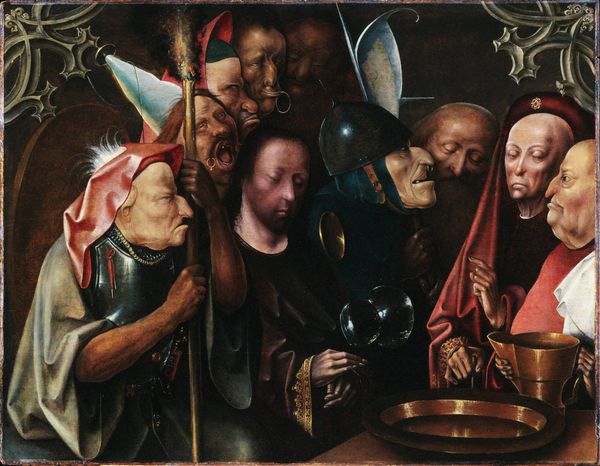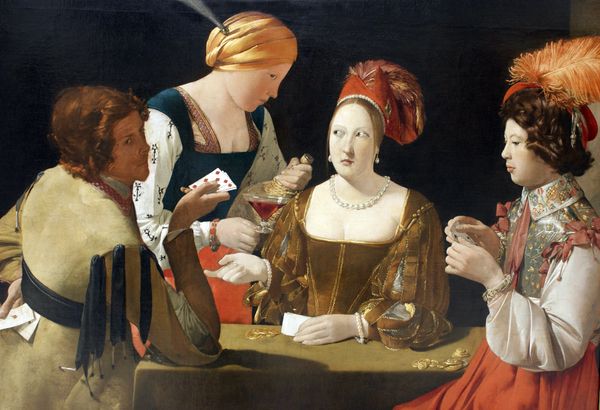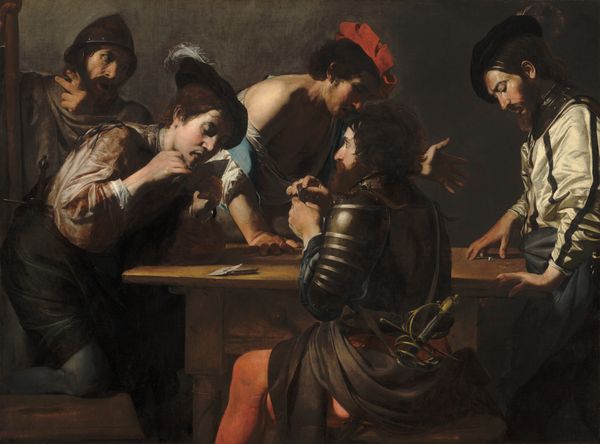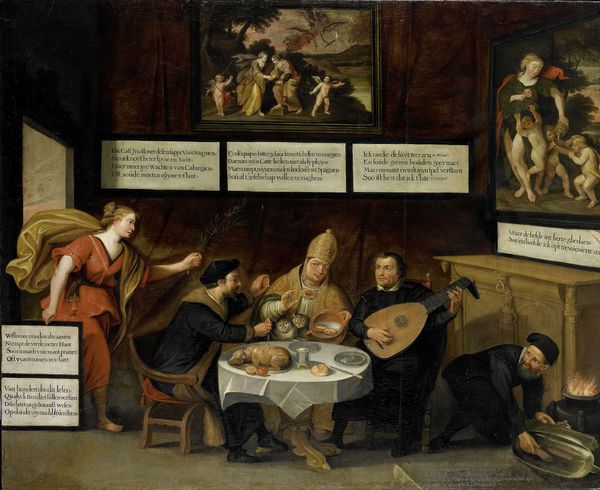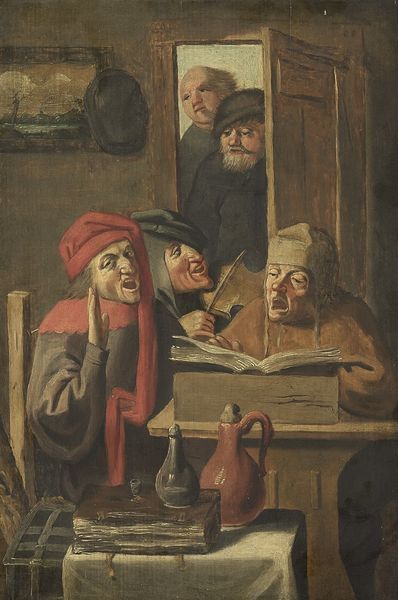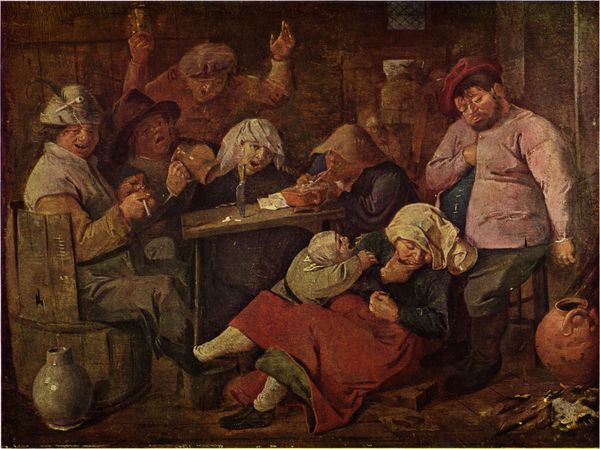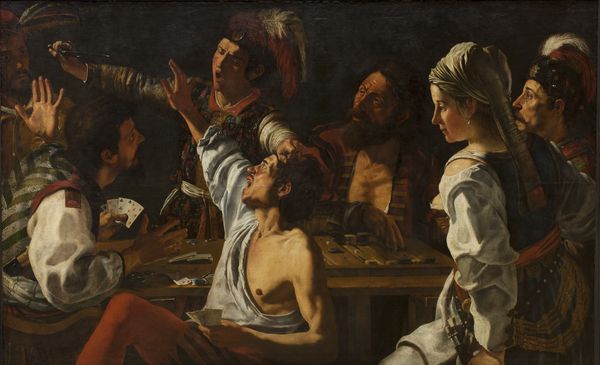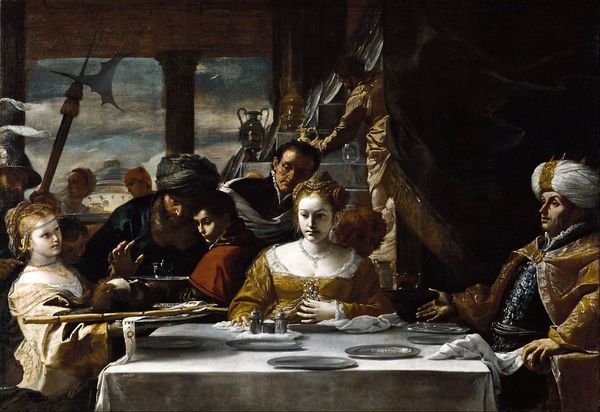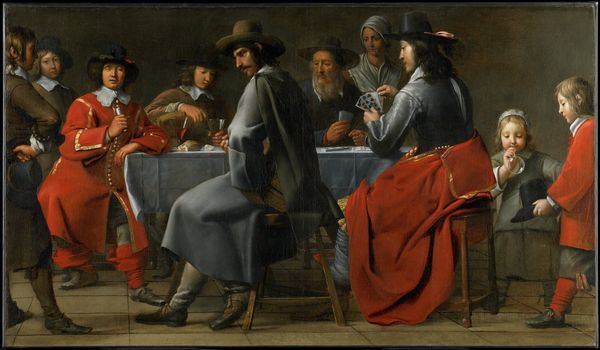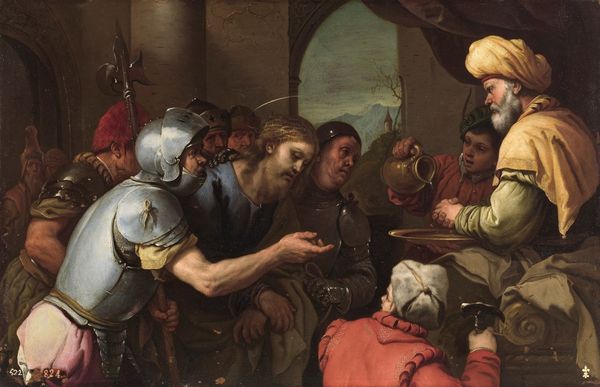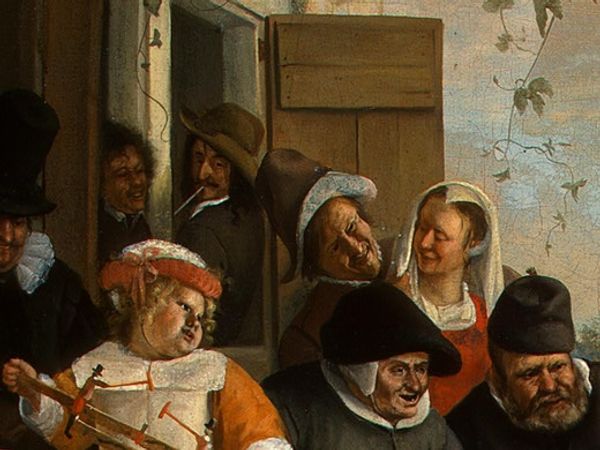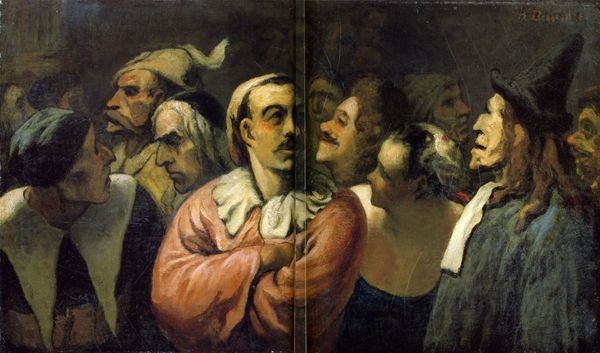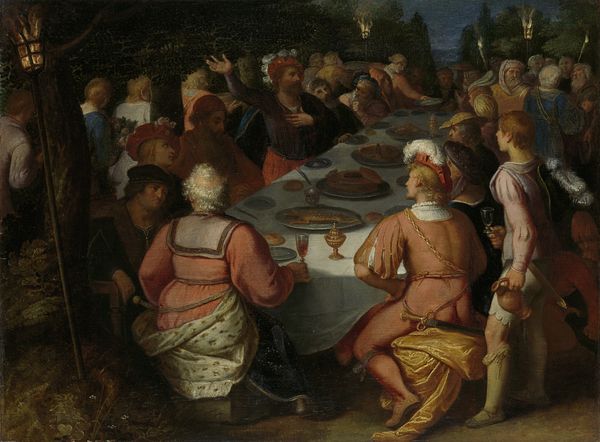
painting, oil-paint
#
portrait
#
narrative-art
#
painting
#
oil-paint
#
genre-painting
#
northern-renaissance
Dimensions: 89 x 54 cm
Copyright: Public domain
Curator: Look at this painting: Quentin Matsys' "Ill-Matched Marriage," created around 1530. What is your first impression? Editor: Stark. And almost brutally honest. I am immediately struck by the visual tension between the figures—a young man embracing a much older woman—surrounded by these… grimacing onlookers. The mood feels oppressive. Curator: Indeed. It speaks to a timeless critique, doesn't it? The Northern Renaissance was often concerned with morality. Here, the iconography really hammers home the idea of vanity and greed, with an old woman who’s seemingly marrying for youth. Editor: Yes, it’s a harsh commentary. You see the blatant commodification of marriage—especially for women, who often lacked agency. Look at those horrified, yet complicit, faces behind them. It exposes the patriarchal structures that perpetuate this kind of transactional union. Is the young man there against his will or a participant, eager to gain in status? Curator: And there's the young man who's quite attentive, with gold overflowing on the table between the wedding couple. It echoes older motifs. Images of mismatched couples have been around since antiquity, where often an animal head would replace one of the figures. But Matsys goes even further into human frailty and imperfection here. It is as though this scene distorts aspects of familiar marital symbolism we can recognize in Jan Van Eyck's Arnolfini Portrait (1434). Editor: Exactly. The painting doesn't just condemn the act itself; it implicates society at large. This narrative really challenges viewers to think critically about social and gender dynamics—what’s considered acceptable, and at what cost. Look, even a rosary at the scene's bottom, not performing the task expected from it...it is as if they did not realize that by seeking only personal enrichment, no virtue is achieved through prayer. Curator: Ultimately, it’s a work layered with meaning and timeless human foibles. Even now, we reflect on these visual metaphors...they prompt us to contemplate continuity through symbols. Editor: Agreed. These themes, sadly, remain relevant and deeply uncomfortable. This portrait remains valuable for prompting critical engagement on the systems that commodify intimacy, even today.
Comments
No comments
Be the first to comment and join the conversation on the ultimate creative platform.
